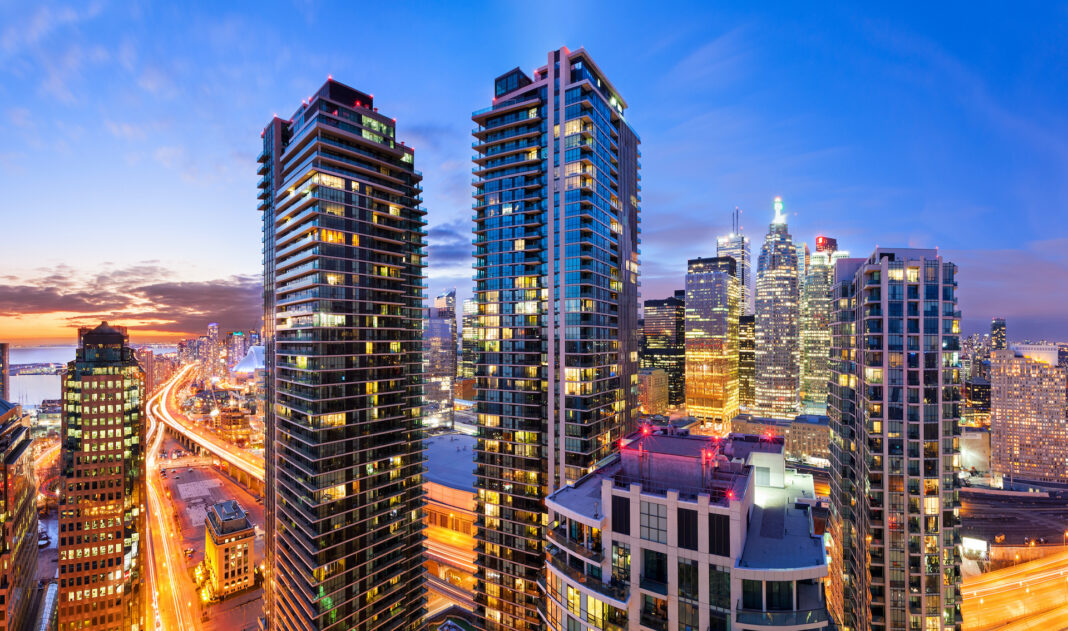
High-rise living is becoming more common across the United States as property developers build more high-rise apartments than ever before. In the 1990s, developers built 126 high-rise apartment buildings in the United States. Between 2010 and 2018, the number of new high-rise apartment buildings rose to 699. High-rises are becoming larger too, with the median number of apartments in each increasing from 243 to 274. As high-rise apartments become more common, you want to consider the high-rise living pros and cons before making your move.
What is high-rise living?
High-rise living is living in tall multistory apartment buildings, known as high-rise apartments. These apartments are typically in the downtown and central business areas of large cities. Given their locations, high-rise apartment living usually involves being close to work, entertainment venues, public transportation, and other amenities.
What is a high-rise apartment?
The National Fire Protection Agency defines a high-rise apartment as an apartment building with seven or more stories. Apartment market data firm Yardi Matrix says apartments should be at least 10 stories before they’re called high-rises. Once buildings get to more than 40 or 50 stories, they’re usually called skyscrapers rather than high-rises. High-rises are taller than low-rises, which have up to four stories, and mid-rises, which have between five and 10 stories, depending on your definition.
Note that other countries have their definitions of high-rises. For example, in India, a building is usually classified as a high-rise if it’s at least four stories high.
What are the benefits of living in a high-rise apartment?
- Breathtaking Views: One of the biggest perks of high-rise living is the stunning views that come with living at a higher altitude. From city skylines to waterfront vistas, the views from high-rise apartments can be truly breathtaking.
- Convenience: Living in a high rise can be incredibly convenient, particularly if you work in the city or have a busy lifestyle. Many high-rise buildings offer amenities such as fitness centers, pools, and 24-hour security, making it easy to stay healthy and safe while enjoying the benefits of city living.
- Social Opportunities: High-rise living can also offer great opportunities for socializing, with many buildings hosting events and gatherings for residents. This can be a great way to meet new people and build connections within your community.
What are the disadvantages of living in a high-rise apartment?
High-rise apartment living isn’t for everyone. While some people love being in the heart of the action, others long for a more laid-back suburban lifestyle with cleaner air, more parking options, and easier access to green spaces. Here are some of the disadvantages of high-rise living.
- Noise: Living in a high-rise building can come with some drawbacks, including increased noise levels due to the high density of residents and proximity to busy streets and highways.
- Cost: High-rise living can also come with a higher price tag than other housing options, particularly in sought-after urban areas.
- Limited Outdoor Space: While high-rise buildings often offer great amenities, outdoor space can be limited, making it challenging for those with pets or who enjoy spending time outside.
Tips for making the most of high-rise living
- Decorate Your Space: Make your high-rise apartment feel like home by decorating it with personal touches such as artwork, plants, and textiles.
- Get to Know Your Neighbors: Take advantage of the social opportunities offered by your building and get to know your neighbors through events and gatherings.
- Take Advantage of Amenities: High-rise buildings often offer fantastic amenities such as fitness centers, pools, and rooftop decks. Make sure to take advantage of these amenities and enjoy all that your building has to offer.
Frequently asked questions
Yes, living in a high rise can be safe, particularly if the building has 24-hour security and other safety measures in place. It’s important to research the safety record of the building before moving in and to take common-sense precautions such as locking doors and windows.
Even if your high-rise apartment doesn’t have a lot of outdoor space, you can still enjoy the benefits of nature by incorporating plants, flowers, and herbs into your living space. Consider using window boxes or hanging baskets to create a small garden on your balcony or patio.
While noise can be a drawback of high-rise living, there are strategies you can use to minimize its impact. Consider investing in noise-cancelling headphones, using white noise machines, or installing sound-absorbing curtains to reduce noise levels in your apartment.
Many high-rise buildings do allow pets, but it’s important to check the building’s pet policy before moving in. Some buildings may have restrictions on the size or breed of pets allowed, or may require additional fees or deposits.
Final thoughts
Living in a high rise can be a unique and exciting experience that offers many benefits, from stunning views to convenient access to city amenities. However, it’s important to consider the potential drawbacks, such as noise and limited outdoor space, and to do your research before choosing a building. By being prepared and taking advantage of the opportunities high-rise living provides, you can create a comfortable and enjoyable home in the heart of the city.
If you think living in a high-rise is the right choice for you, browse thousands of high-rise apartments on Zumper and find your next home.



